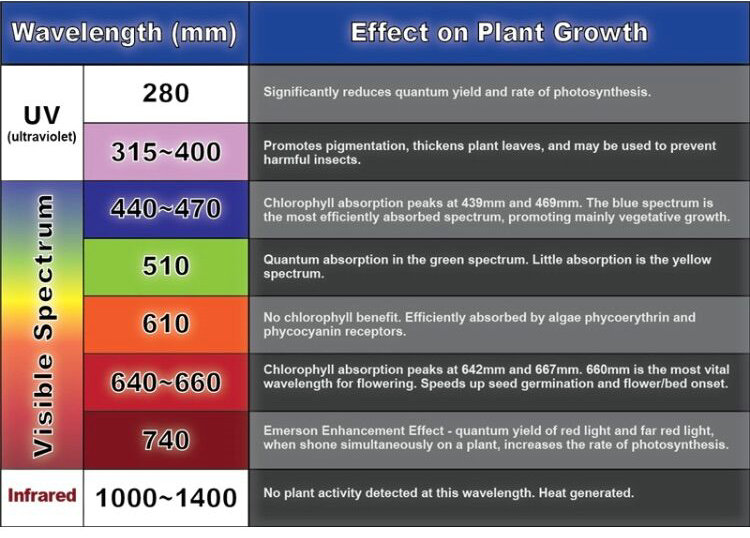Most terrestrial plants grow by selective absorption of natural light from the sun. In plant factories and indoor living spaces, artificial light is necessary as a source of light energy. Therefore, it is necessary to develop technologies to control the light environment and provide effective and economical irradiation for plants.
Solar radiation is subject to extensive scattering and absorption by the atmosphere before it reaches the surface of the earth. Direct solar radiation has wavelengths ranging from 300 to 3,000 nm, and is divided into 3 bands: ultraviolet radiation, visible radiation and infrared radiation. The wavelengths of visible radiation for humans are in the range from 380 to 780 nm, and the peak of the visibility curve (photopic vision) is at 555 nm. Similarly, plants have a range of wavelengths that are physiologically effective. There are 2 types of effective radiation for plants: physiologically active radiation and photosynthetically active radiation (PAR). These 2 types of radiation, ranging from 300 to 800 nm, are physiologically effective in photosynthesis, pigment bio-synthesis, photoperiodism, phototropism and photomorphogencsis ).


Photosynthesis, which uses PAR (waveband 400 to 700 nm), requires an energy source with high intensity. The units of PAR radiation are expressed as total photon fluxes in this waveband, since this radiation induces chemical reactions. The total energy emitted from the light source is designated as photosynthetic photon flux (PPF). On the other hand, the energy actually received by plants is designated as photosynthetic photon flux density (PPFD), and its S. I. units are expressed as µmol s-1 m-2. Although quantum sensors are preferable for measuring the photon flux, because of their high cost, radiation is often measured by PPFD with conversion factors for luminance.